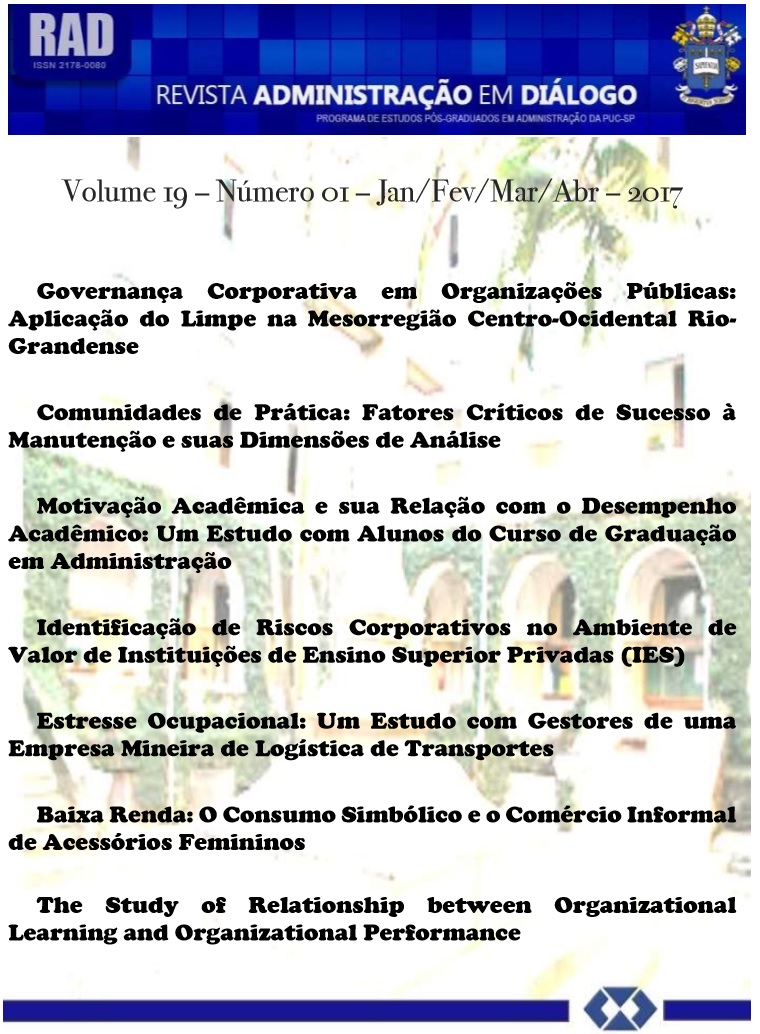Identification of Corporate Risks not Environmental of Value of Private Higher Education Institutions
DOI:
https://doi.org/10.20946/rad.v19i1.23444Keywords:
Enterprise Risk Management (ERM), Higher Education Institution, Value System.Abstract
This paper aims to understand what type of corporate risk can be identified in the value system of private higher education institutions. The study is classified as descriptive and qualitative, based on analysis of interviews with managers of two different private higher education institutions. The results show that the nomenclature and typology of corporate risk is still unclear, considering the perception of the private higher education institutions’ managers. In addition, it was noted that the most evident risk was legal, arising from the relationship with the Ministry of Education; followed by financial risk, caused by evasion and lack of students.
Metrics
Downloads
Published
How to Cite
Issue
Section
License
Authors who publish in this journal agree to the following terms:
1. Authors retain the copyright and grant the journal the right of first publication, with the work licensed simultaneously under a Creative Commons Attribution License after publication, allowing the sharing of work with acknowledgment of the authorship of the work and initial publication in this journal.
2. Authors are authorized to take additional contracts separately, for non-exclusive distribution of the version of the work published in this journal (eg publish in institutional repository or as a book chapter), with acknowledgment of authorship and initial publication in this journal.
3. Authors are allowed and encouraged to publish and distribute their work online (eg in institutional repositories or on their personal page) at any point before or during the editorial process, as this can generate productive changes, as well as increase the and the citation of the published work (See The Effect of Free Access).








